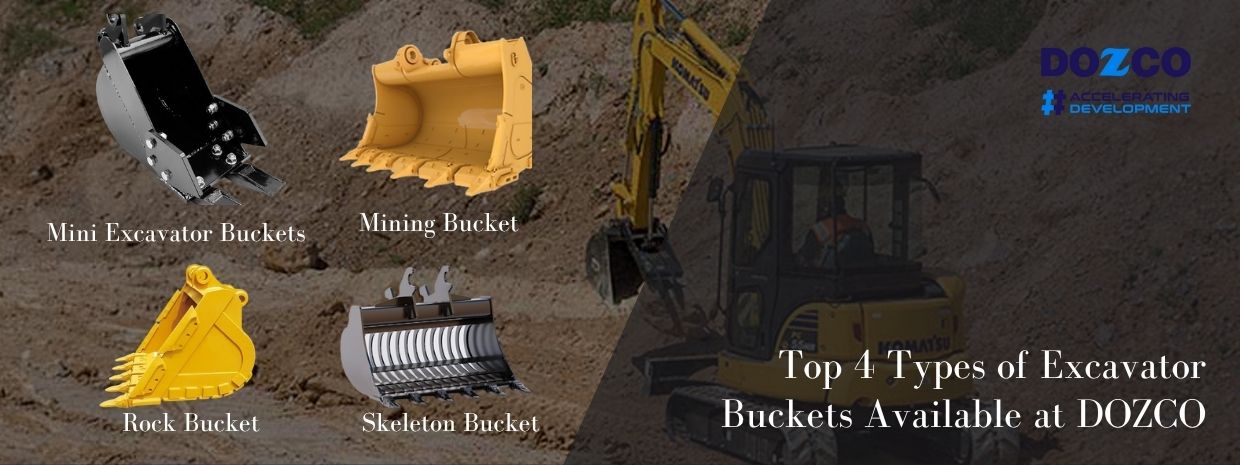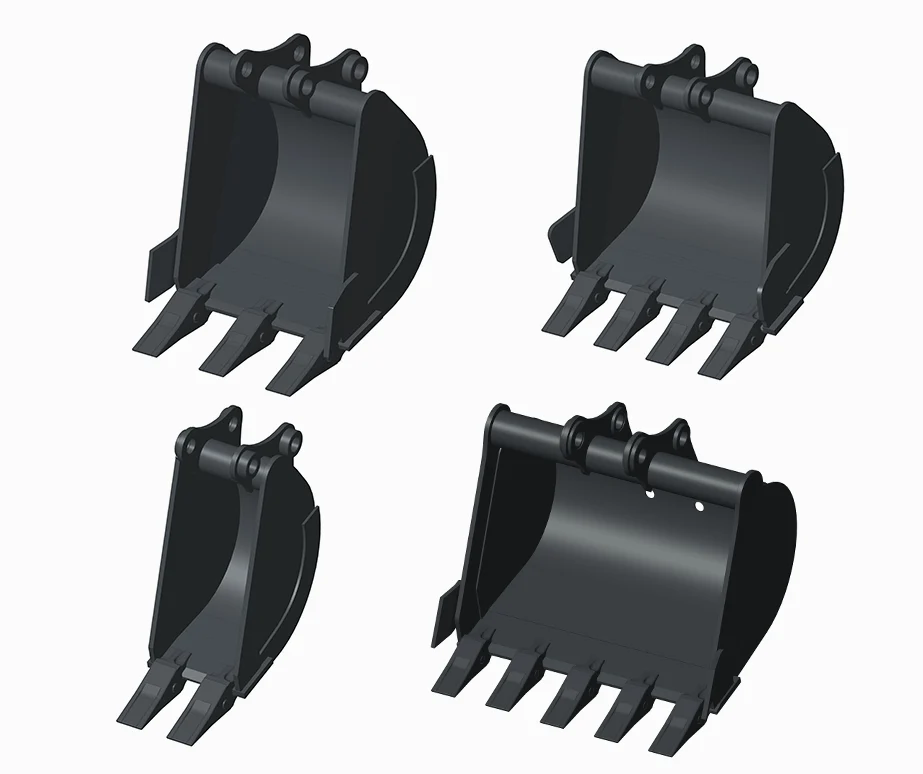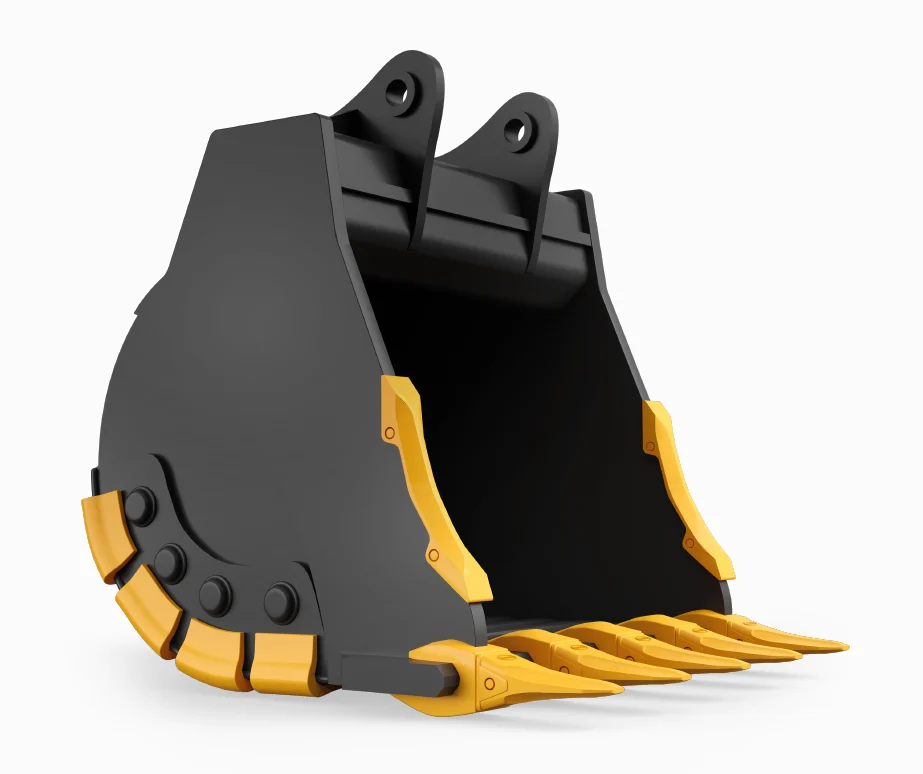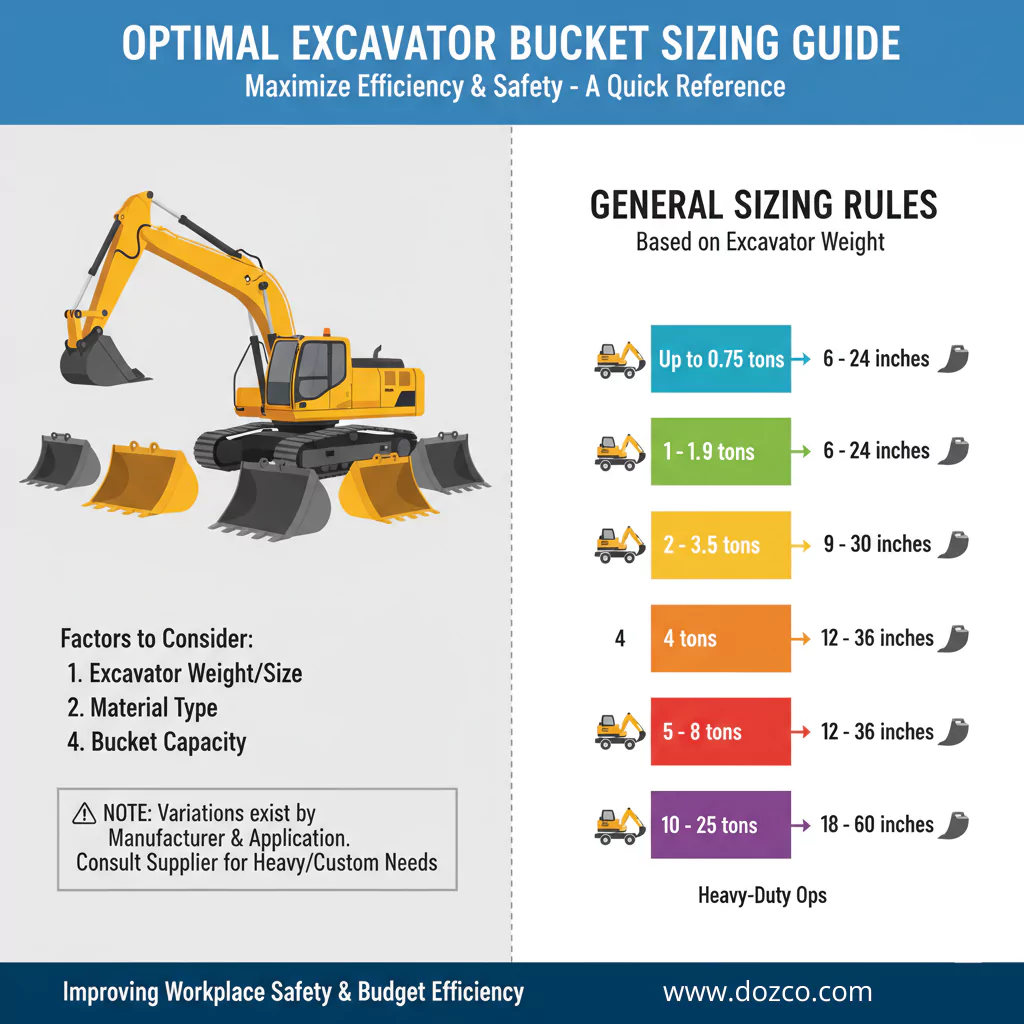Excavators are widely used for construction work including digging trenches. If you look closely, you will see it’s the bucket that primarily does the digging work. There are various types of excavator buckets available in the market. Each type helps with different tasks.
At DOZCO, we have researched and manufactured the top 4 types of buckets that can help with most of the heavy-duty tasks. These buckets are durable and highly efficient. Whether you’re working in rocky terrains, soft soils, or construction areas, these buckets are perfect for every project.
Let’s take a look at the excavator buckets and for what purpose they are used:
Types of Excavator Buckets and Their Day-to-Day Uses
During excavation, the bucket attached to your machine can significantly impact your work efficiency and safety. Following is a list of excavator buckets suitable for different conditions:
1. Mini Excavator Buckets
Mini excavator buckets are one of the most important attachments for construction, landscaping, and agricultural projects. These buckets are manufactured with wear-resistant steel to provide up to 50% more wear life. These types of excavator buckets are known for their precise movement which makes them ideal for areas that have limited space.
Even though they might be smaller in size, they can be quite high-powered. Depending on the specific model, they can help with different tasks like breaking up hard surfaces, digging, site preparation, utility work, and more.
2. Mining Bucket
The mining industry is heavily dependent on excavator buckets for handling valuable material, preparing the ground, excavating, and so on. These tasks can be quite complicated with safety being a major concern. When working in the mining sites, operators must opt for buckets with high steel strength and durability.
DOZCO manufactures high-quality buckets with anti-abrasive wear parts and high-strength steel fabrication, which reduce maintenance costs and increase the life span of the attachment. These buckets improve work efficiency, and since they can withstand harsh conditions, they need low maintenance.
3. Rock Bucket
Well, tougher tasks call for tougher tools. And rock bucket is one of the best types of excavator buckets available in the market for heavy duty tasks. It is built to handle harsh environments where a digging bucket may struggle. The exclusive design with sharp, heavy-duty teeth helps to break through stone, asphalt, and other dense materials. Its reinforced build gives it the strength to endure constant impact, during the construction or demolition tasks.
4. Skeleton Bucket
Even though the skeleton bucket looks like a digging bucket, it is much more versatile. The type of excavator buckets have built-in spaced bars along its base and sides. This special design allows it to shift fine materials like soil or sand lifting only larger debris such as stones or concrete.
What is the right bucket size for your excavator?
Even though there are different types of excavator buckets available in the market, not all are suitable for your operation. So, when choosing the right one for your excavator, you also need to consider the bucket size. In most cases, the size of your bucket depends on the size of your excavator.
You need to have an idea of the excavator bucket’s capacity to maximize efficiency. It also helps with improving workplace safety and saving up your budget.
Here is a guide on general sizing rules and dimensions to help you determine:
- For excavator models weighing up to 0.75 tons, go for a standard bucket with a width ranging from 6 to 24 inches.
- 1 to 1.9 tons excavators also need buckets 6 to 24 inches wide.
- For 2 to 3.5-ton excavators, bucket widths increase to between 9 and 30 inches.
- A 4-ton excavator bucket width typically ranges from 12 to 36 inches.
- Excavators in the 5 to 8-ton range accommodate bucket widths between 12 and 36 inches.
- Excavators of 10 to 25 tons can accommodate standard buckets between 18-60 inches and are mostly used for heavy-duty operations.
However, please note that bucket widths can vary by manufacturer and application. And for heavier machines, you may need a custom or oversized bucket. Please discuss with your supplier or manufacturer for more details.
Wrap Up
Excavators are versatile machinery that come with different attachments to meet the task requirements. Excavator buckets are one of these attachments, assisting with digging, leveling, and more. However, these attachments mostly operate in rough environments, like muddy fields, uneven terrain, hazardous areas, and extreme temperatures.
Hence, the buckets should be manufactured with high-quality material to be able to withstand such conditions. So, when choosing the right type of excavator bucket, consider all these factors and increase your task pace.
FAQs
Q.1. How do I choose the right excavator bucket for my project?
There are various things you should consider, for instance:
- The ground type, whether it’s frozen, soil, or rock.
- What your project needs, including digging, trenching, and leveling.
- The working environment, like if you’re working in tight spaces, near utilities, or in extremely cold weather.
Q.2. Can I use the same bucket for digging and trenching?
While a digging bucket can perform basic trenching, it’s better to go for specialized options like the V bucket or micro trenching bucket. These buckets are better suited for narrow and deep trench work, especially in utility or fiber-optic installation projects.
Q.3. What are the most commonly used types of excavator buckets?
The most commonly used excavator buckets include mining buckets, skeleton buckets, and rock buckets. These are ideal for general construction, landscaping, trenching, and heavy-duty excavation tasks.
Q.4. What is the bucket capacity of an excavator?
Bucket capacity shares insights on the volume of material an excavator bucket can hold. It can change depending on the machine size, bucket type and density of the material. For instance mini buckets can hold a lesser volume of materials than larger buckets.
Q.5. How many types of excavator buckets are there?
Excavators are manufactured to cater to the industry needs. Hence, there are quite a few models available, including:
- Mini excavator buckets
- Mining Buckets
- Skeleton Buckets
- Rock Buckets
- Utility Bucket
- Grading Bucket
- Tilt Grading Bucket
- V Bucket
- Frost Bucket
- Micro Trenching Bucket, and so on.
Q.6. What is a Class 3 excavator bucket?
Class 3 buckets are heavy duty buckets specially designed for 3-4ton excavators. These buckets are suitable for trenching and utility work, helping with abrasive and dense materials. Class 3 buckets are made of high-strength steel and have a robust design which makes them easier to use in harsh conditions.





